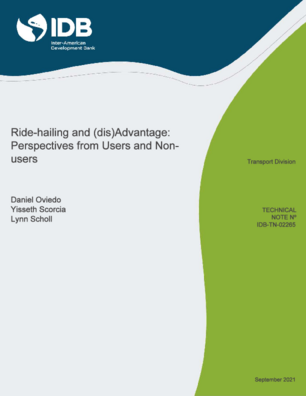Ride-hailing and (dis)Advantage: Perspectives from Users and Non-users
Date
Sep 2021
The introduction of ride-hailing in cities of Latin America and the Caribbean (LAC) remains a relatively new topic in regional research and a contentious issue in local policy and practice. Evidence regarding users and how do they differ from non-users is scarce, and there is little documented evidence about how user preferences and perceptions may influence the uptake of ride-hailing. This paper uses primary data from a survey collected from users and non-users of ride-hailing in Bogotá during 2019 to develop a Latent Class Analysis Model (LCA) to identify clusters of users and non-users of ride-hailing. The paper builds on results from the LCA to reflect on conditions of advantage and disadvantage that may make ride-hailing attractive and beneficial for particular social groups. The paper identifies four unique clusters: Carless middle-income ride-hailing users, Disadvantaged non-users, Young middle-class non-users, and Advantaged ride-hailing users. The research uses data on such perceptions to draw insights that may inform commercial and policy decisions. Findings suggest that issues such as the perception of legality in ride-hailing and aversion to crime play a significant role in the choice of such a mode in the context of Bogotá, particularly among socially and transport advantaged users.




